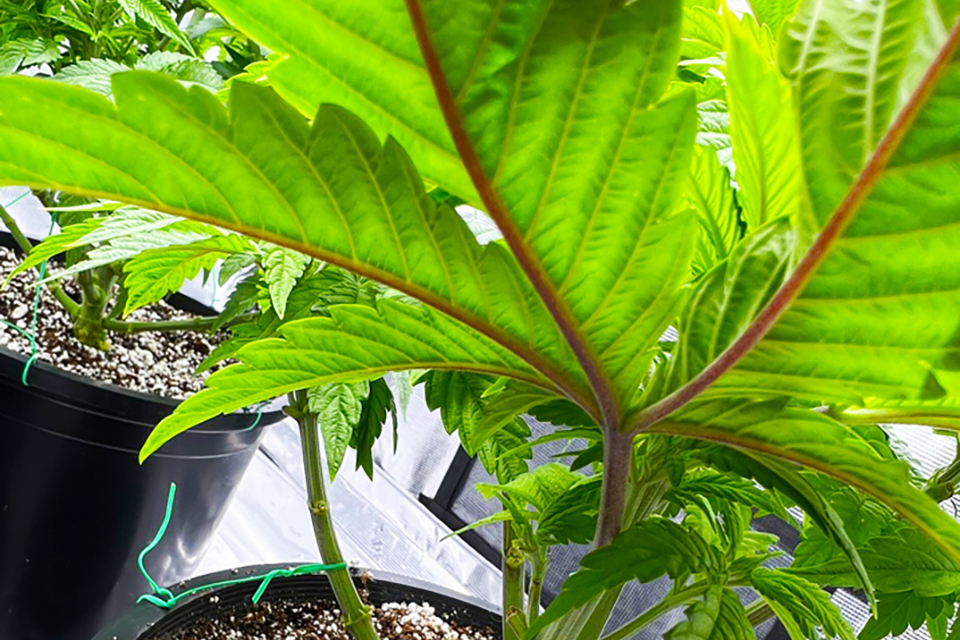
As a home cannabis grower, noticing changes in your plant’s appearance can be both fascinating and concerning. One common issue that many growers encounter is the appearance of purple or red stems. But should you worry about this color change? In this guide, we’ll explore the causes behind purple and red stems, what they might indicate about your plant’s health, and when you should take action.
Understanding Plant Stem Colors
Cannabis plants, like many other plants, can exhibit a range of colors in their stems due to various factors. The primary cause of color change in stems is the presence of pigments such as anthocyanins and carotenoids. These pigments can cause stems to turn red, purple, or even blue under certain conditions.
Causes of Purple or Red Stems
1. Genetic Factors:
Some cannabis strains naturally develop purple or red stems due to their genetic makeup. This is particularly common in strains that have been bred for their unique color profiles. If your plant’s genetics are predisposed to these colors, there’s usually no cause for concern.
2. Environmental Stress:
Temperature: Cooler temperatures, especially during the night, can enhance the production of anthocyanins, leading to purple or red stems. This is a natural response and not typically harmful.
Light Intensity: High light intensity, particularly from LED grow lights, can cause stems to turn red or purple. Adjusting the light distance and intensity can help mitigate this effect.
3. Nutrient Deficiencies:
Phosphorus Deficiency: One of the most common causes of red or purple stems is a lack of phosphorus. Phosphorus is crucial for plant energy transfer and photosynthesis. If your plants are deficient, they may also exhibit slow growth and dark, discolored leaves.
Magnesium Deficiency: Magnesium is another essential nutrient, and its deficiency can lead to purple stems along with interveinal chlorosis (yellowing between the leaf veins).
4. pH Imbalance:
The pH level of your growing medium affects nutrient availability. If the pH is too high or too low, it can lock out essential nutrients, leading to deficiencies that manifest as purple or red stems.
5. Plant Stress:
Physical Damage: Handling plants roughly or damage from pests can cause stems to change color as part of the plant’s healing response.
Watering Issues: Both overwatering and underwatering can stress the plant, potentially leading to changes in stem color.
When to Worry
While purple or red stems are often benign, there are times when they indicate underlying problems that need to be addressed:
1. Nutrient Deficiencies:
If purple or red stems are accompanied by other symptoms such as yellowing leaves, stunted growth, or poor bud development, it’s likely due to a nutrient deficiency. Testing your soil and adjusting your feeding regimen can help correct this issue.
2. Environmental Stress:
Persistent cold temperatures can stress your plants and reduce their overall health. Ensure your grow environment maintains a stable, optimal temperature range for your specific cannabis strain.
3. pH Imbalance:
Regularly monitor and adjust the pH of your growing medium to ensure nutrients are available to your plants. The ideal pH range for soil is typically 6.0-7.0, while hydroponic systems should maintain a pH of 5.5-6.5.
4. Pest and Disease:
Inspect your plants for signs of pest infestation or disease. Physical damage from pests can cause color changes, and treating these issues promptly can prevent further harm.
How to Address Purple or Red Stems
1. Check Your Strain’s Genetics:
Research your cannabis strain to determine if purple or red stems are a natural characteristic. If so, there’s no need for concern.
2. Optimize Growing Conditions:
Maintain stable temperatures and avoid drastic changes, particularly at night.
Ensure your grow lights are set at the appropriate distance to prevent light stress.
Regularly monitor humidity levels to keep your plants comfortable.
3. Nutrient Management:
Conduct a soil test to identify any nutrient deficiencies.
Adjust your nutrient solution to ensure a balanced diet for your plants, focusing on phosphorus and magnesium if deficiencies are suspected.
Use quality fertilizers that provide a comprehensive nutrient profile.
4. Monitor pH Levels:
Use a reliable pH meter to regularly check the pH of your soil or hydroponic solution.
Adjust pH levels using pH up or pH down solutions to keep them within the optimal range.
5. Regular Inspection:
Conduct regular inspections of your plants to identify early signs of stress, pest infestation, or disease. Early detection and intervention can prevent more serious problems.
Conclusion
Purple or red stems in cannabis plants can be intriguing and are often harmless, especially if they’re a natural trait of the strain you’re growing. However, they can also indicate environmental stress, nutrient deficiencies, or other issues that need attention. By understanding the causes and taking proactive steps to address potential problems, you can ensure your plants remain healthy and productive.
Ready to optimize your cannabis growing conditions? Explore our extensive range of high-quality cannabis seeds at Kind Seed Co. and start your journey towards a healthy, vibrant grow. Visit our website today and discover the best seeds for your garden.



